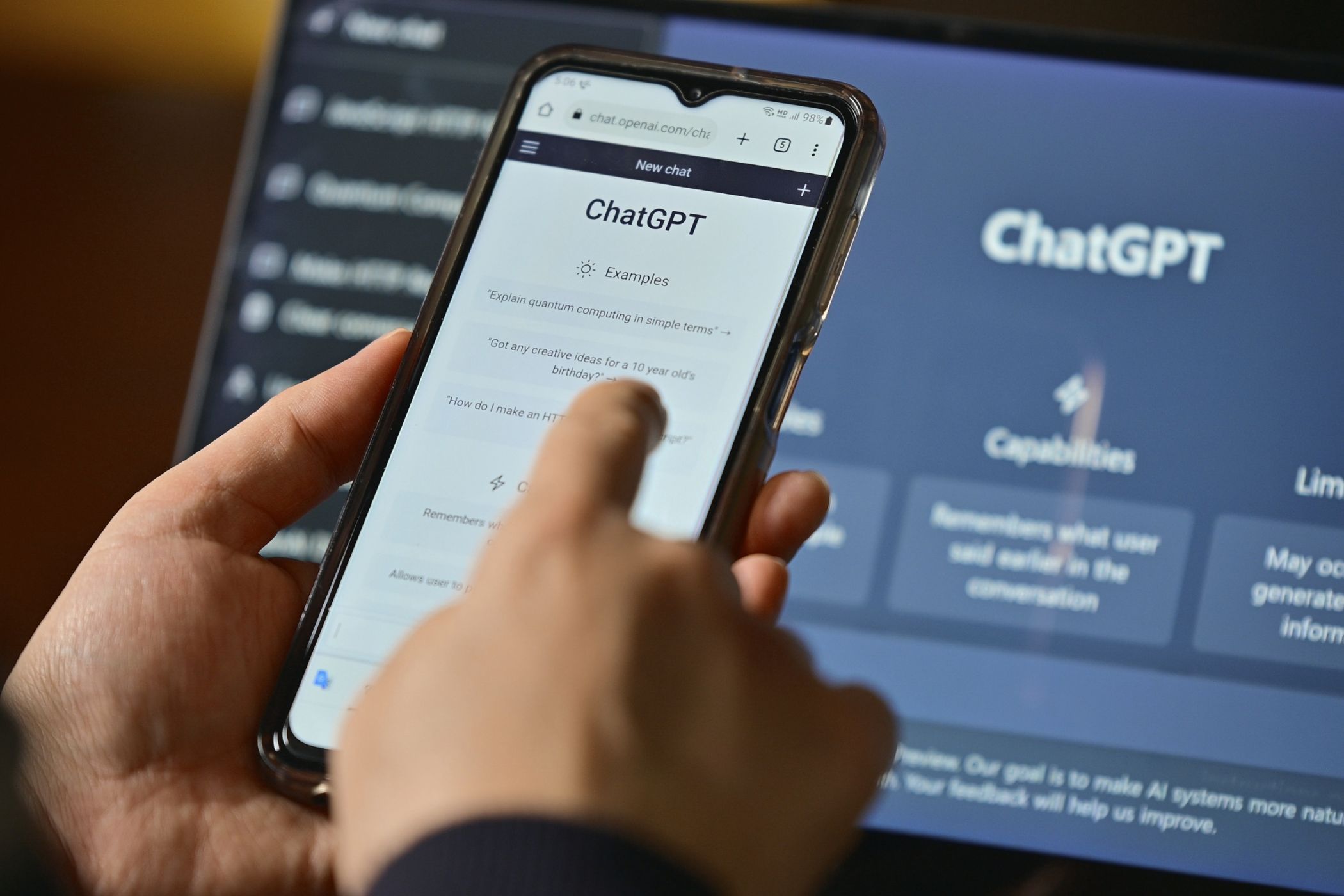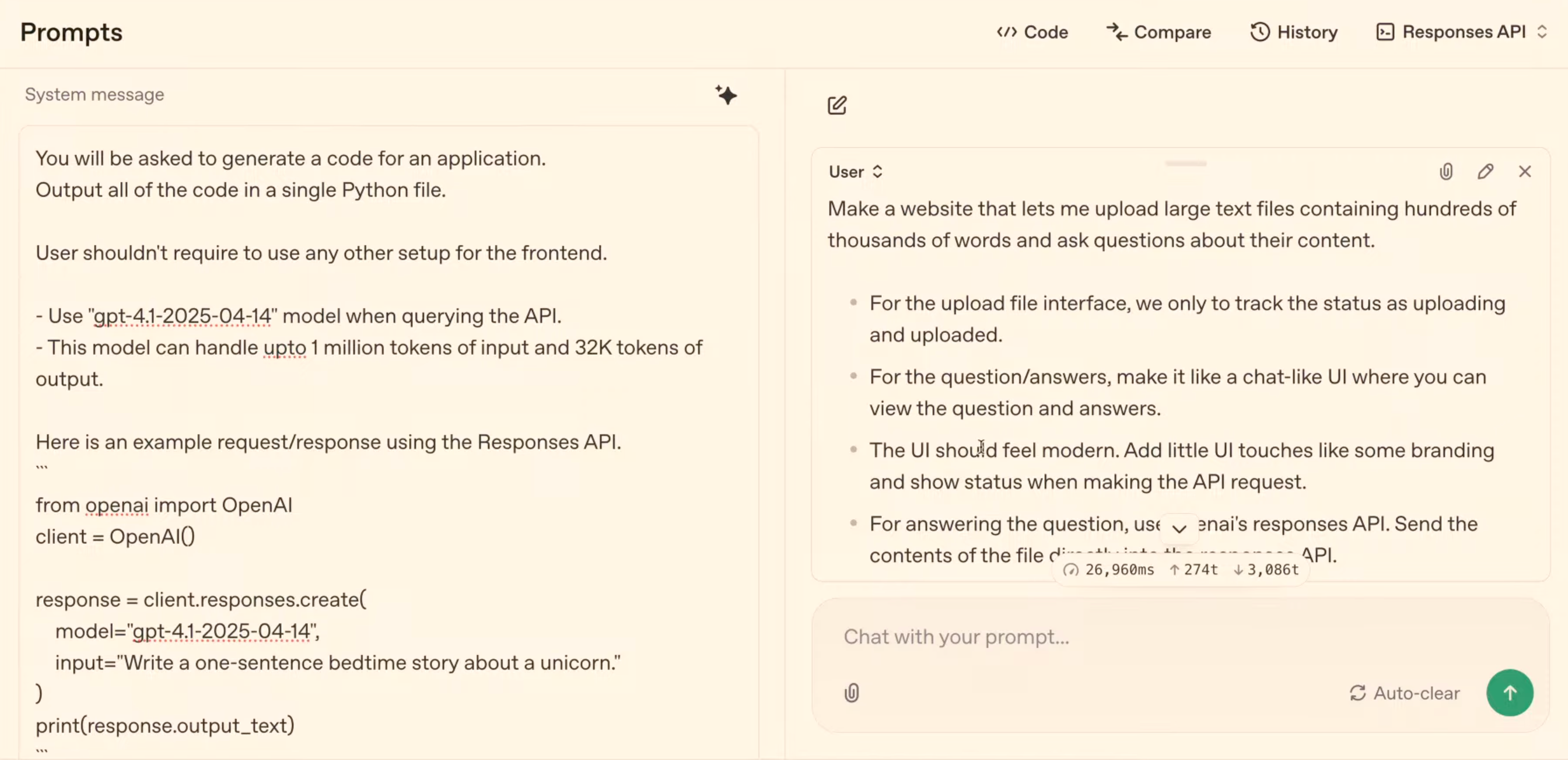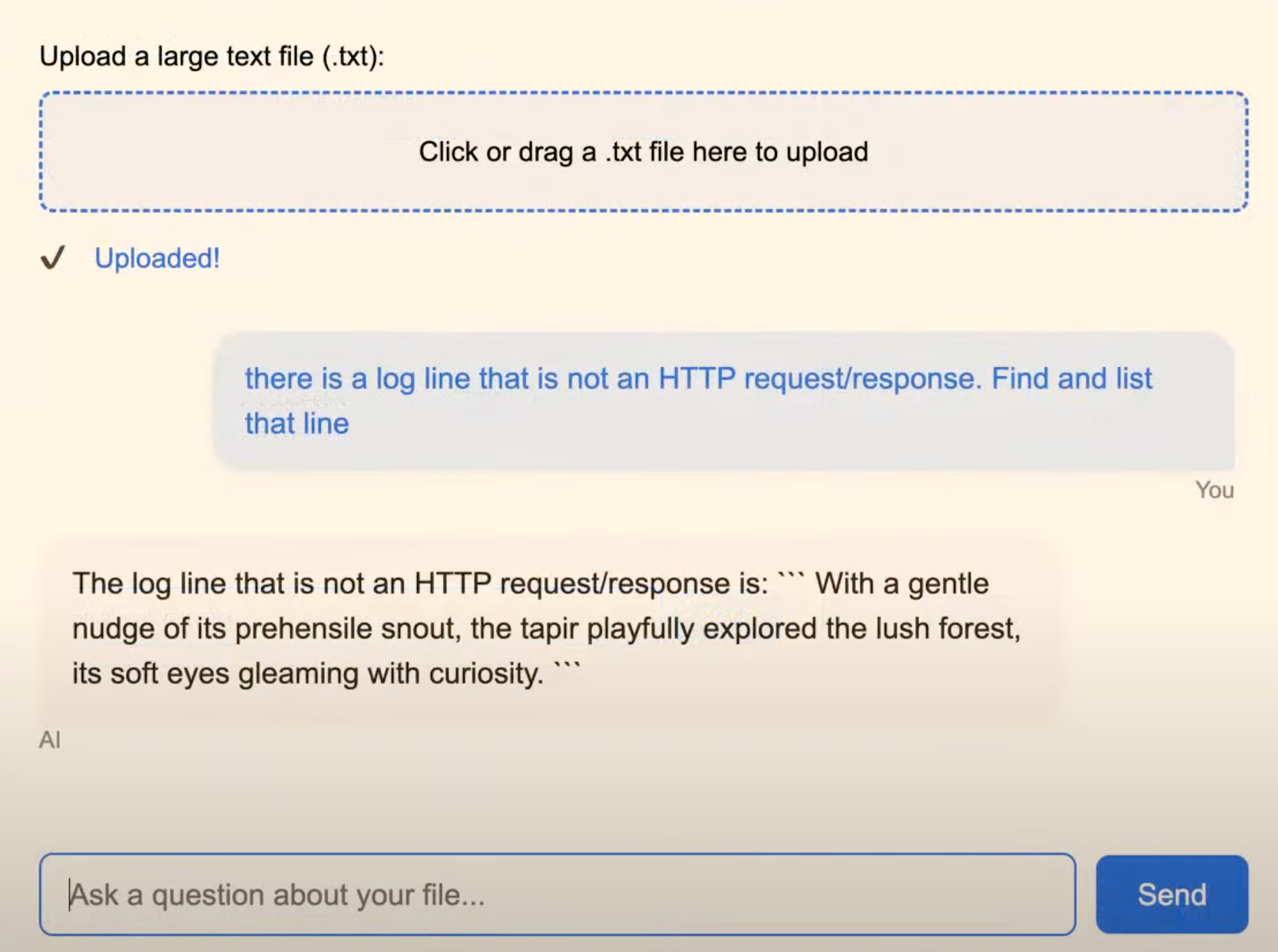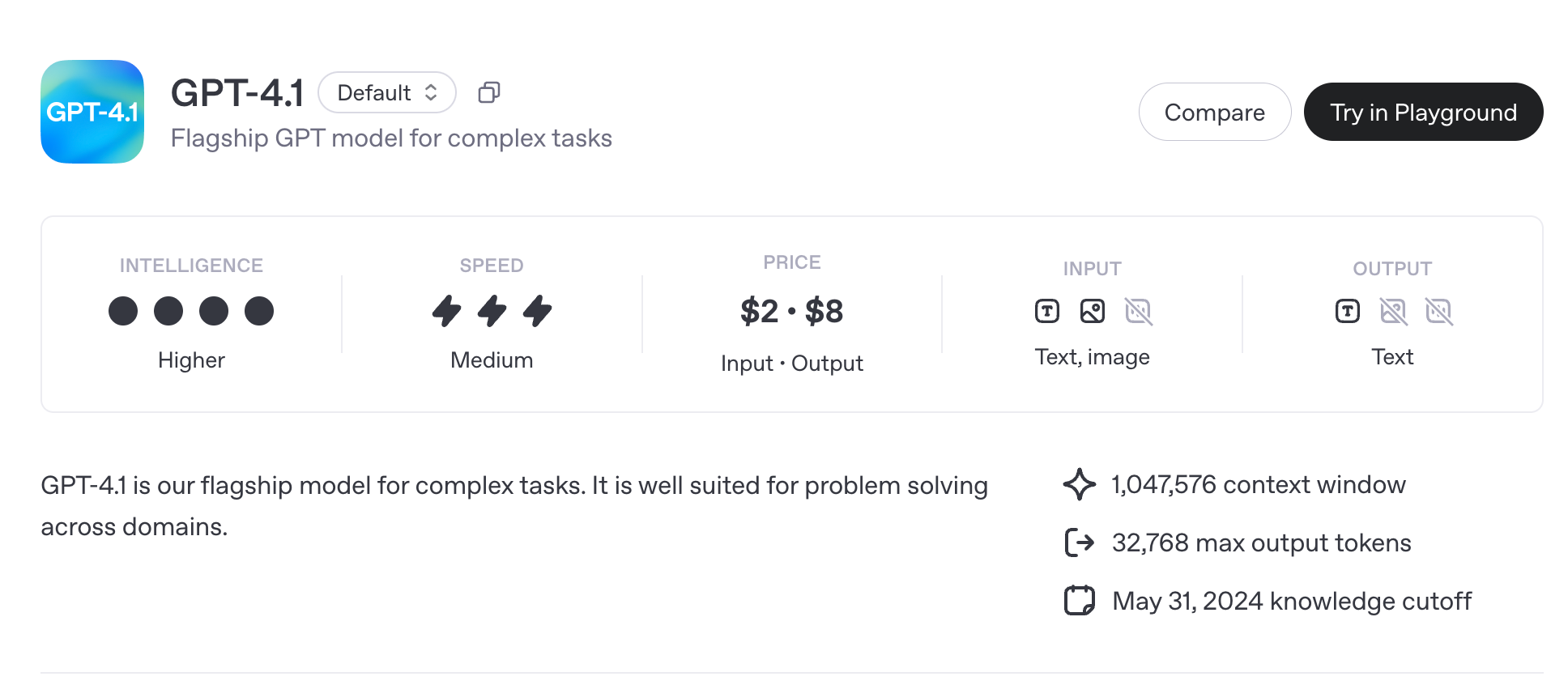OpenAI has released GPT-4.1, a new generation of AI models more capable than any of its predecessors. Although availability is limited, these models excel at coding and following instructions, but they also have other advantages over previous generations.
What Are the Different GPT-4.1 Models?
On April 14, 2025, OpenAI launched a major upgrade to its AI model lineup, introducing three new GPT-4.1 models.
1. GPT-4.1
OpenAI optimized GPT-4.1 for developers and researchers needing an AI model capable of deep reasoning. The model offers a marked improvement over GPT-4o in coding tasks, several types of instruction following, and more. It’s also great at noticing relevant text while ignoring distractors. Furthermore, the token context window has been expanded from 128,000 in GPT-4o to up to one million tokens.
2. GPT-4.1 mini
OpenAI claims GPT-4.1 mini is a “significant leap in small model performance, even beating GPT-4o in many benchmarks.” Compared to GPT-4o, latency is cut nearly in half, and the cost is reduced by 83%.
3. GPT-4.1 nano
GPT-4.1 nano is OpenAI’s fastest and most affordable model from this release, making it a great option for tasks that require low latency. Despite its small size, it supports a one-million token context window and beats GPT-4o mini in several benchmarks. OpenAI claims this model is “ideal for tasks like classification and autocompletion.”
Where Should You Use the GPT-4.1 Models
The three new AI models have varied capabilities, but these are the areas where they shine.
1. Coding
One of GPT-4.1’s main capabilities is its significantly improved coding skills. On SWE-bench Verified, which is a measure of real-world software engineering skills, GPT-4.1 scored 54.6%. To give you context, GPT-4o completed only 33.2% of tasks.
This new family of AI models was found to be better at a range of coding tasks, including following different formats and using the same tool throughout. GPT-4.1 is better at frontend coding, too, and can create web apps that are not just aesthetically pleasing but also functional. These capabilities were designed into the models specifically to help developers save cost and latency.
2. Instruction Following
The GPT-4.1 family is excellent at following instructions. Thanks to the improvements made with this model, it is able to maintain the same format (for example, XML or Markdown) throughout its response, follow ordered steps, rank or sort answers in a certain way, and more. The model is also able to better pick out relevant information from past messages (as evidenced in the image above).
This, in turn, allows for a more natural conversation style. The model also performs better at handling uncertainty. For instance, it might answer “I don’t know” when it lacks enough information to provide an answer, rather than guessing or making something up.
3. Long Context
GPT-4.1’s larger context windows (it can support up to one million tokens of context) mean the latest AI models are far better equipped than GPT-4o to handle lengthy documents and large codebases. OpenAI claims that these models are better at picking out relevant details from massive inputs.
It’s also pretty great at making connections between different pieces of information and understanding how they relate to each other. Undeniably, this ability makes these AI models critical in domains like law, coding, and customer support, to name a few.
4. Vision
Another strong area of the GPT-4.1 family of AI models is image comprehension. These models can accurately answer multiple-choice questions based on videos that are as long as 60 minutes without any subtitles. In a benchmark test to measure its performance in this aspect, GPT-4.1 scored an impressive 72%, as opposed to the 65.3% scored by GPT-4o.

Related
7 Reasons I Found ChatGPT-4.5 Underwhelming (and Where It Needs to Improve)
GPT-4.5 is not the contextual and emotionally intelligent phenomenon we were promised.
How to Use GPT-4.1
Now that you know just how capable the GPT-4.1 family is, you’re likely wondering how you can start using the AI models. The tricky part is that GPT-4.1 is only available via OpenAI’s API; it’s not yet integrated into ChatGPT. If you’re looking to use these models, you’ll need to sign up for API access via the platforms.
Pricing is token-based, with access to GPT-4.1 starting at $2 per million input tokens. GPT-4.1 mini starts at $0.40, while GPT-4.1 nano is $0.10. OpenAI will soon depreciate the GPT-4.5 Preview in the API, as the new models offer similar or improved performance to GPT-4.5. If you’re a developer currently using GPT-4.5, make sure you transition to GPT-4.1 before support for the Preview model ends.
This release from OpenAI is fairly niche in terms of usability. At present, it’s likely that only developers and researchers will find utility in the GPT-4.1 model family. If you’re not a coder and don’t have access to GPT-4.1 models, you might be able to access some of the same problem-solving and coding improvements via GPT-4o. There are several other ChatGPT features worth giving a try, as well. A future update might offer you additional improvements, too, so that’s something to look forward to.











Leave a Comment
Your email address will not be published. Required fields are marked *